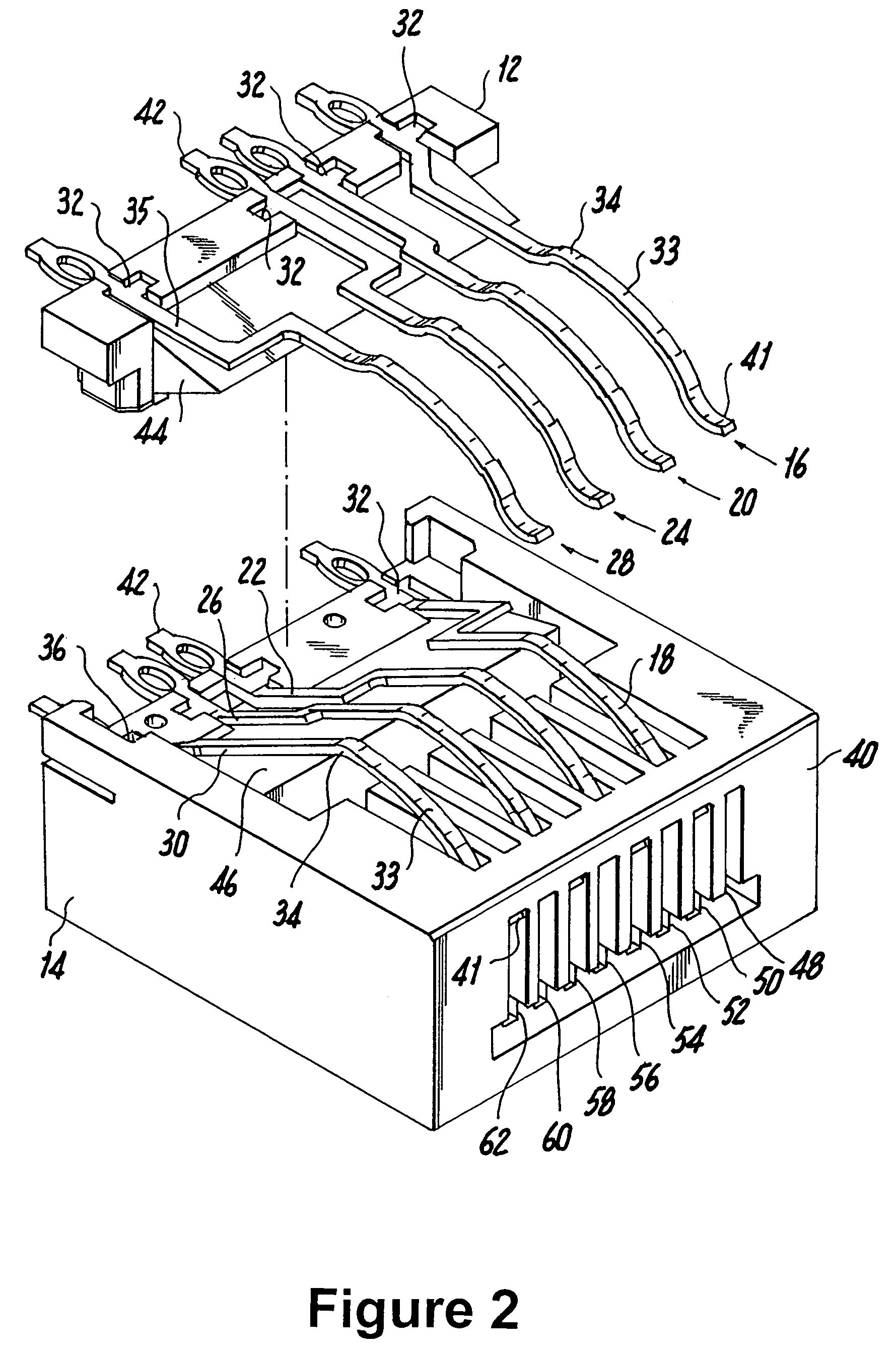Dual reactance low noise modular connector insert
a modular connector and low noise technology, applied in the direction of coupling devices, two-part coupling devices, electrical devices, etc., can solve the problems of loss of intended signals, noise in connection with data transmissions, and primary limiting factors of communication systems performan
- Summary
- Abstract
- Description
- Claims
- Application Information
AI Technical Summary
Benefits of technology
Problems solved by technology
Method used
Image
Examples
Embodiment Construction
)
[0057]Referring now to the drawings, FIGS. 1–12 illustrate an embodiment of a dielectric interface modular insert 10 in accordance with the present disclosure. Insert 10 has an upper portion 12 seated on a lower portion 14, with electrically conductive lead frames 16, 18, 20 , 22, 24, 26, 28 and 30 being disposed between. Preferably, upper portion 12 and lower portion 14 are fabricated from a low dielectric material, such as plastic.
[0058]Insert 10 contains terminals having 8 lead frames in accordance with most standard wiring formations, such as the T568B and T568A style RJ45 plugs. The TIA / EIA commercial building standards have defined category 5e and 6 electrical performance parameters for higher bandwidth (100 up to 250 MHz) systems. In category 5e and 6, the TIA / EIA RJ45 wiring style is the preferred formation and is generally followed throughout the cabling industry.
[0059]Lead frames 16 through 30 are engaged in channel slots 32 with cut outs in upper portion 12 and lower por...
PUM
 Login to View More
Login to View More Abstract
Description
Claims
Application Information
 Login to View More
Login to View More - R&D
- Intellectual Property
- Life Sciences
- Materials
- Tech Scout
- Unparalleled Data Quality
- Higher Quality Content
- 60% Fewer Hallucinations
Browse by: Latest US Patents, China's latest patents, Technical Efficacy Thesaurus, Application Domain, Technology Topic, Popular Technical Reports.
© 2025 PatSnap. All rights reserved.Legal|Privacy policy|Modern Slavery Act Transparency Statement|Sitemap|About US| Contact US: help@patsnap.com



